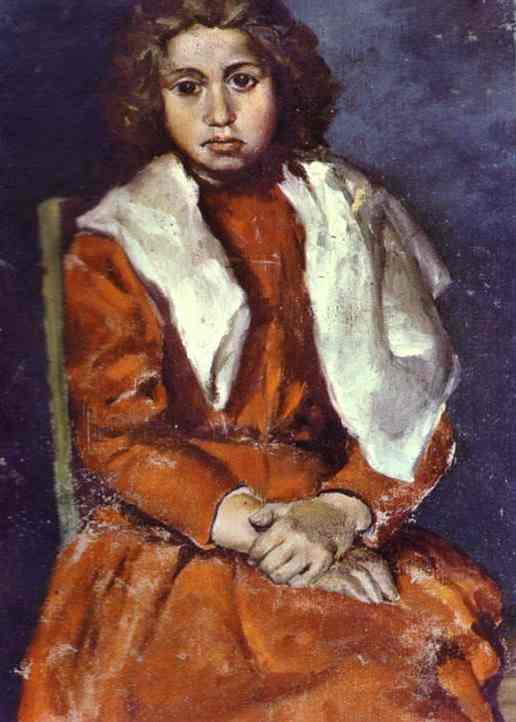
Picasso was recognized as an artistic prodigy at an early age. These works
illustrate his technical capability at that stage of his career. However, he was
not satisfied with the limited possibilities in such a traditional mode of
representation. His constant, incessant striving for new means of expression is
the primary lesson of Picasso's art.
Pablo Picasso, born in Spain, was a child prodigy who was recognized as such by
his art-teacher father..
He was a rebel from the start and, as a teenager, began to frequent the
Barcelona cafes where intellectuals gathered. and went to Paris, the capital of
art, and soaked up the early works by great artistsketchy style impressed him
greatly. Then it was back to Spain, a return to France, and again back to Spain
- all in the years 1899 to 1904.
Picasso was recognized as an artistic prodigy at an early age. These works
illustrate his technical capability at that stage of his career. However, he was
not satisfied with the limited possibilities in such a traditional mode of
representation. His constant, incessant striving for new means of expression is
the primary lesson of Picasso's art.
The Barefoot Girl. 1895. Oil on canvas. Musée Picasso, Paris,
France.

First Communion. 1895/96. Oil on canvas. Museo Picasso, Barcelona, Spain
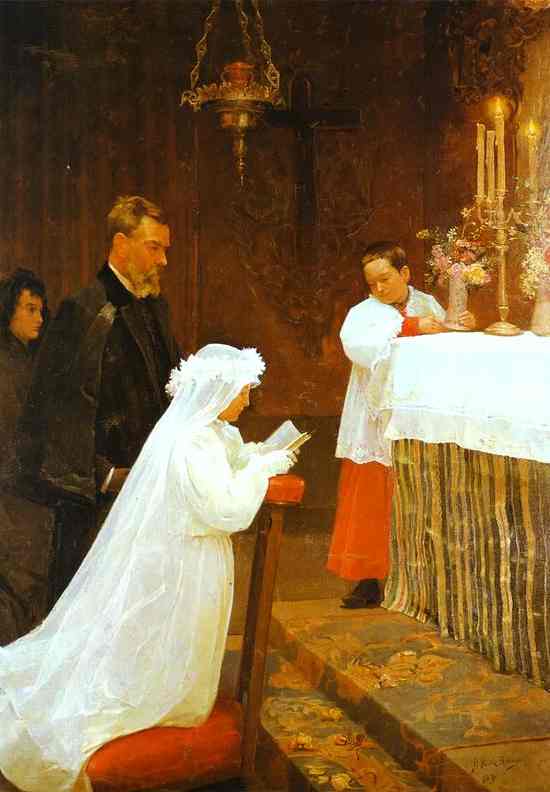
Self-portrait with Uncombed Hair (1896)
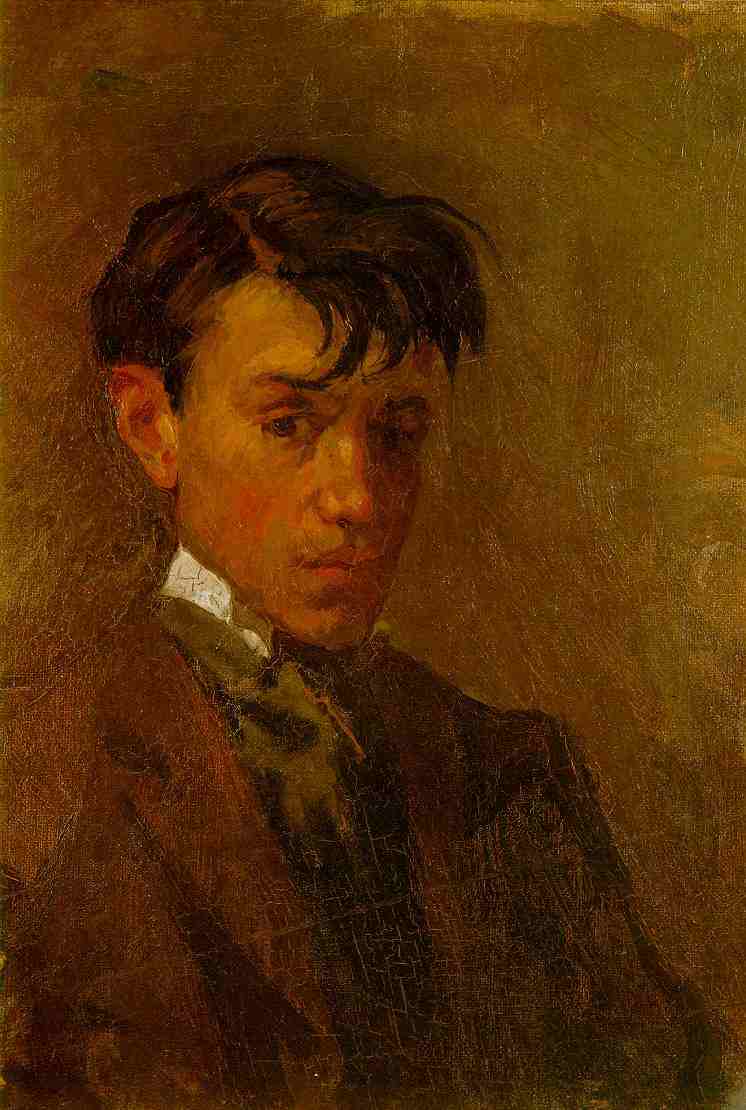
Portrait of the Artist's Mother. 1896. Pastel on Paper. Museo Picasso, Barcelona, Spain
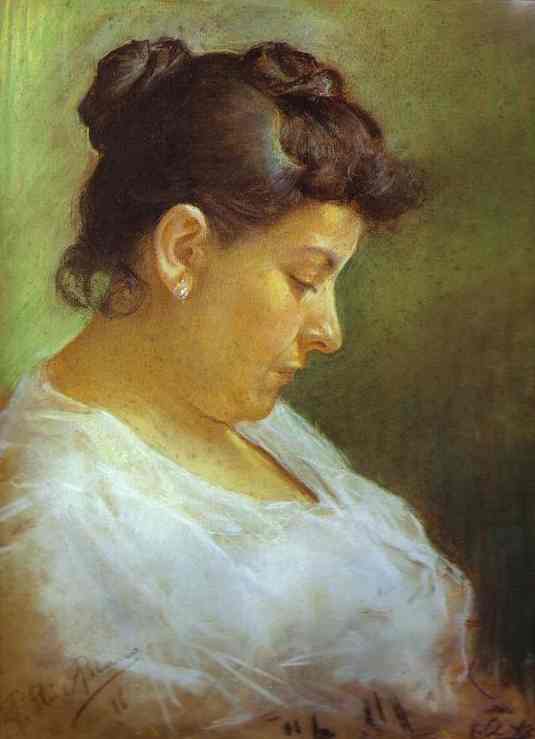
Science and Charity. 1897. Oil on canvas. Museo Picasso,
Barcelona, Spain
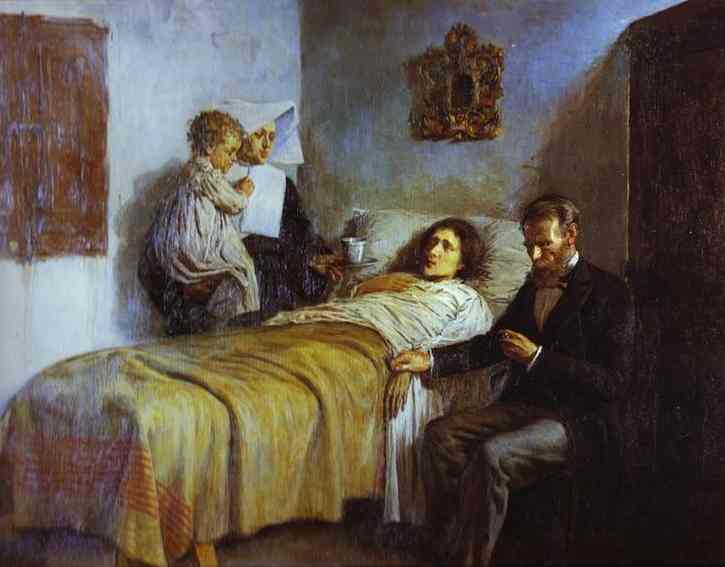
Self-portrait (1899-1900)
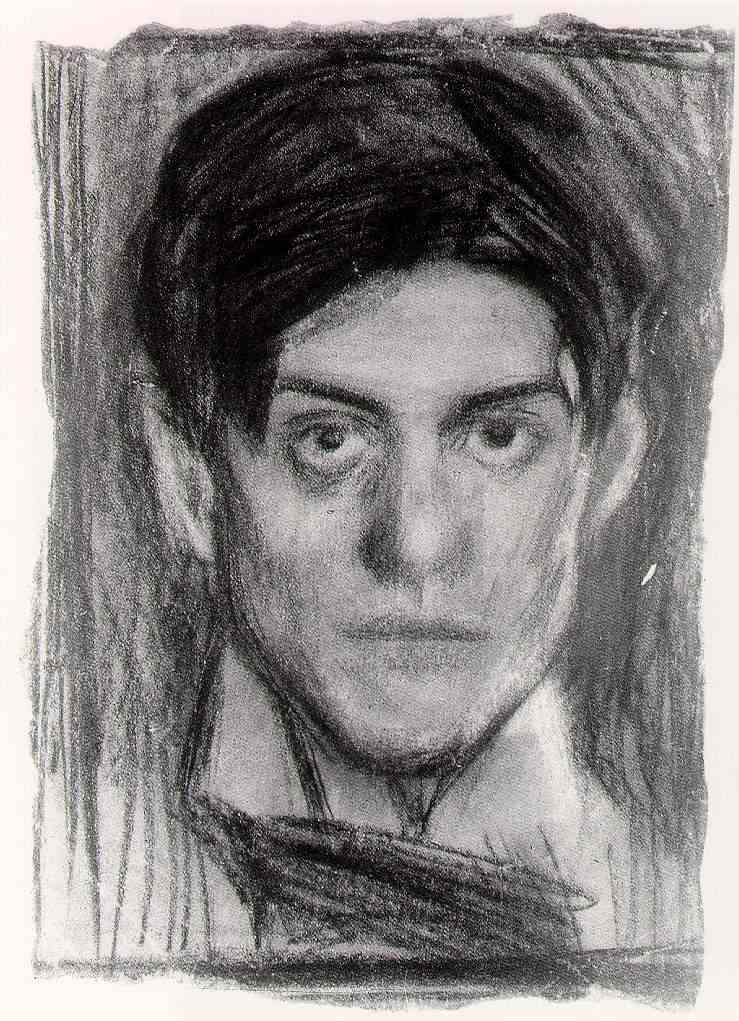
Matador Luis Miguel Dominguin. 1897. Pencil on paper
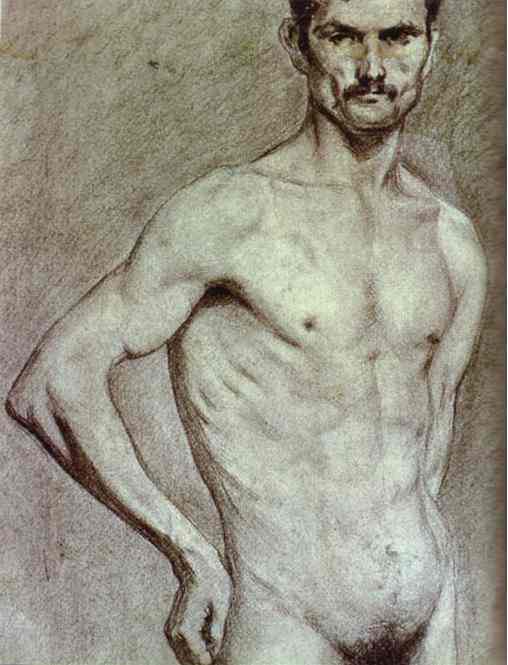
Lola, the Artist's Sister (1899-1900)
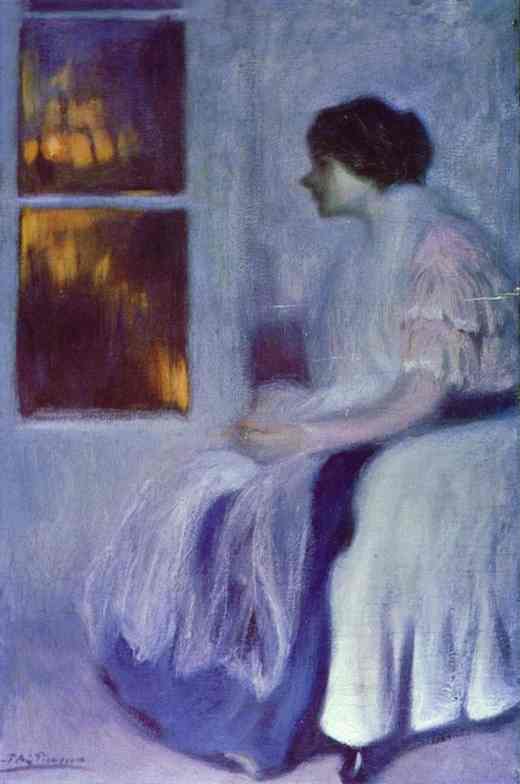
Spanish Couple before an Inn (1900)
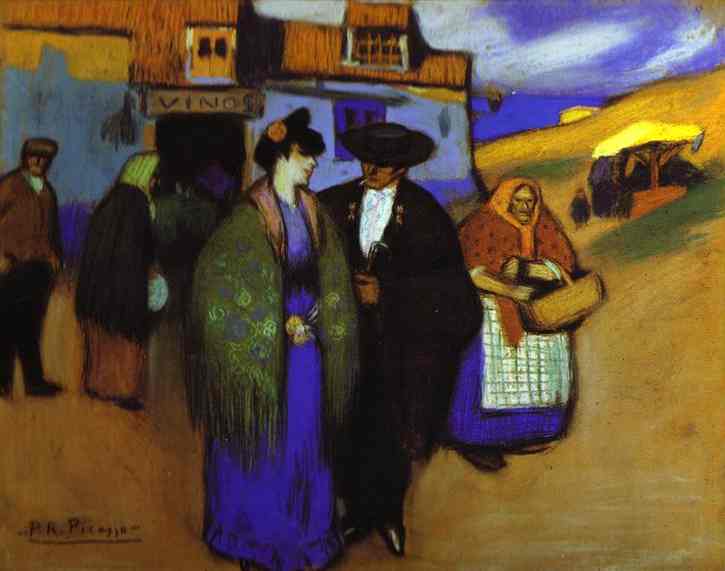
Moulin de la Galette (1900)
Femme En Bleu (1901)
Leaning Harlequin. 1901. Oil on canvas. The Metropolitan Museum of
Art, New York, USA
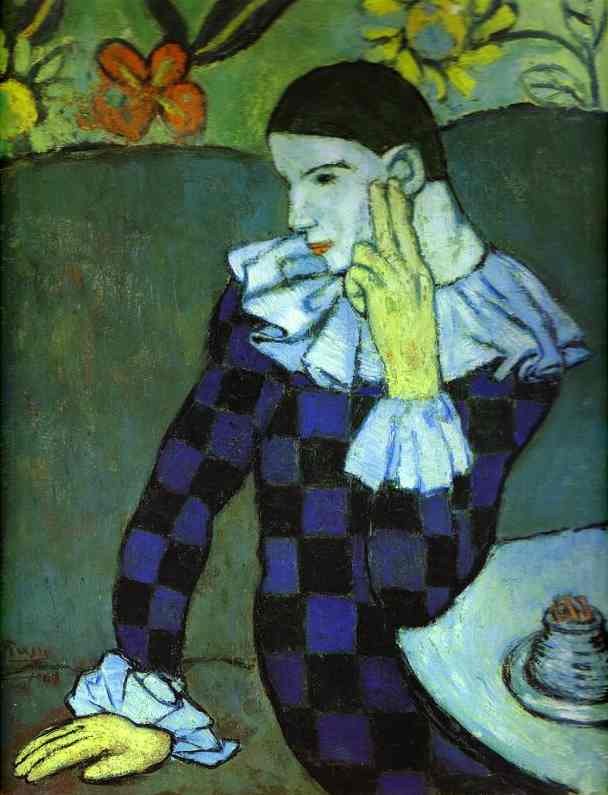
Boulevard de Clichy (1901)
Woman in a Blue Hat. 1901. Pastel on cardboard. Galerie Rosengart,
Lucerne, Switzerland

Young Girl Wearing a Large Hat (1901)
Pedro Mañach (1901)
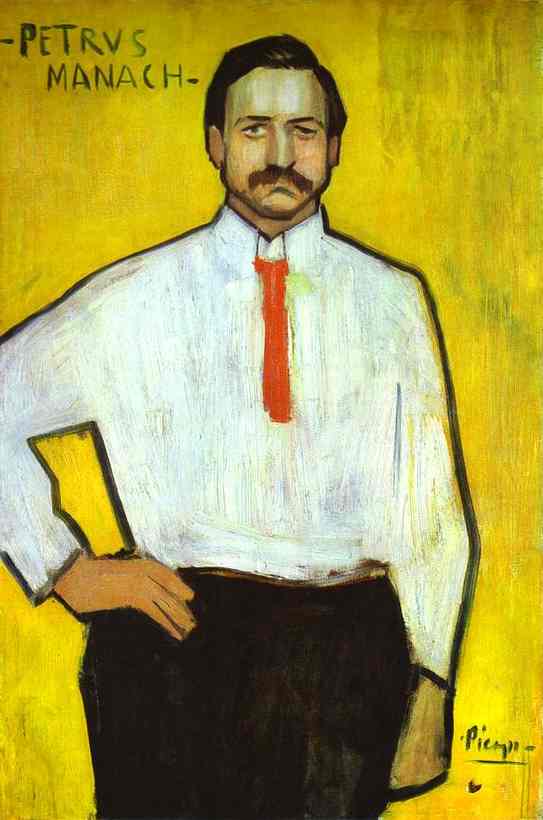
The Absinthe Drinker (1901)
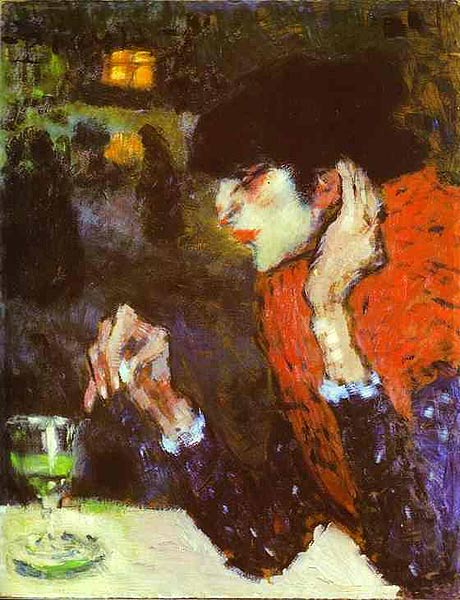
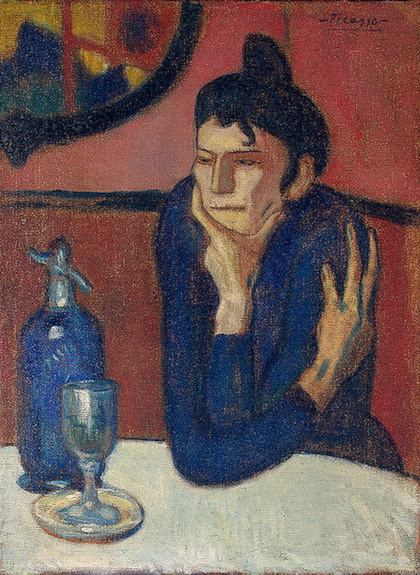
Child with a Dove (1901)
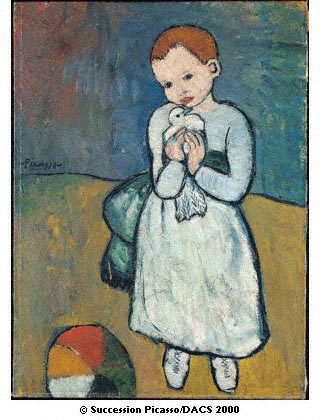
Self-portrait "Yo" (1901)
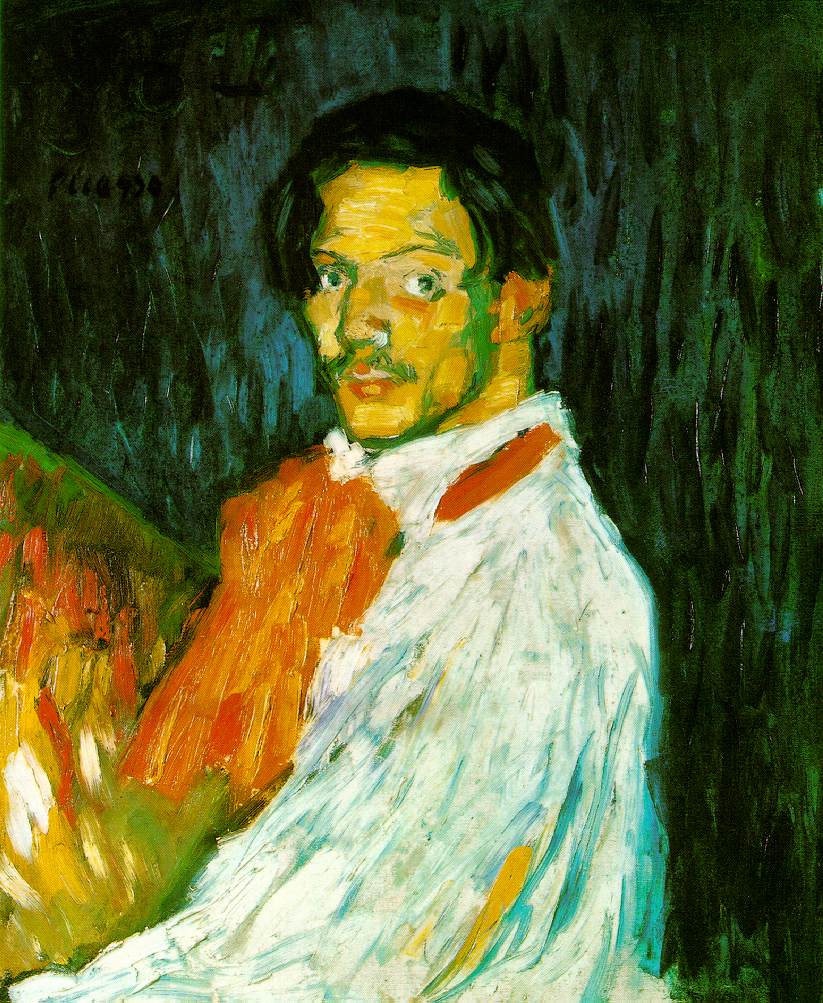
Woman with Chignon. 1901. Oil on canvas. Fogg Art Museum,
Harvard University, Cambridge, MA, USA.
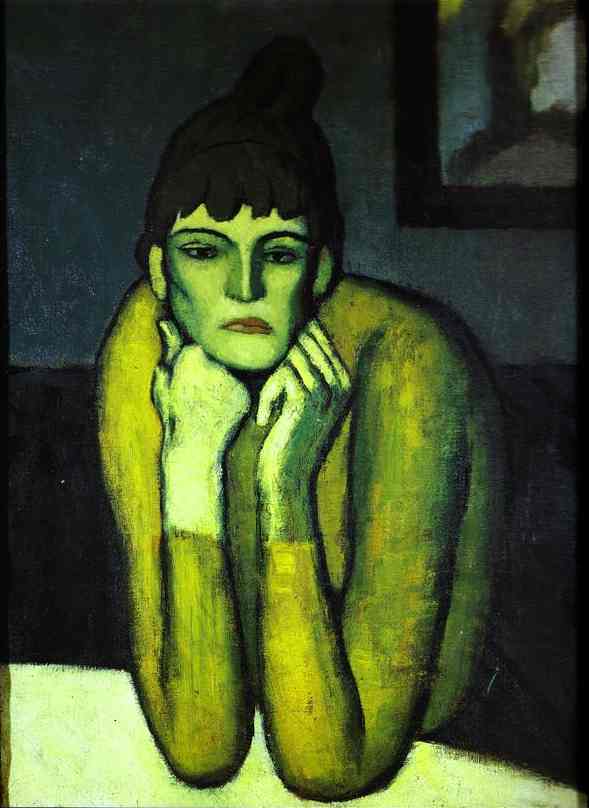
Female Head
Picasso, Pablo.
Oil on canvas pasted on
cardboard.
49.7x36.4 cm
France. 1902 - 1903

Death of Casagemas. 1901. Oil on wood. Musée Picasso, Paris,
France
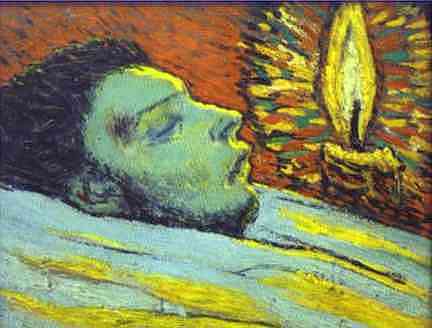
Woman with a Cigarette. 1901. Oil on canvas. Barnes Foundation,
Lincoln University, Merion, PA, USA.

Portrait of Soler (1903)
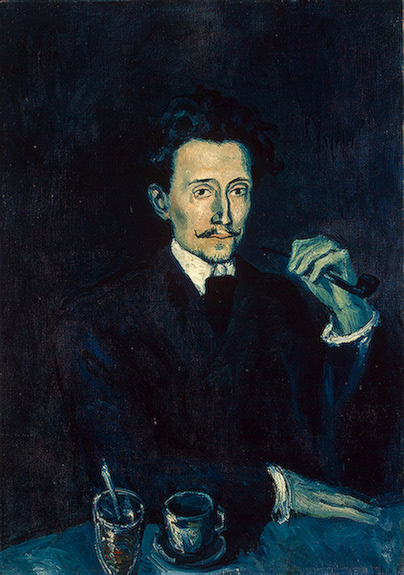
Pablo Ruiz Picasso (b. 1881, d. 1973) is probably the most important
figure in 20th Century art. Time magazine art critic Robert Hughes once said
that "To say that Pablo Picasso dominated Western art in the 20th century is, by
now, the merest commonplace. Before his 50th birthday, the little Spaniard from
Malaga had become the very prototype of the modern artist as public figure. No
painter before him had had a mass audience in his own lifetime."
He was born October 25, 1881 in Malaga, Spain and by the time he died in France
in April of 1973, had created a staggering 22.000 works of art in a variety of
mediums, including sculpture, ceramics, mosaics, stage design and graphic arts.
As critic Hughes notes, "There was scarcely a 20th century movement that he
didn't inspire, contribute to or--in the case of Cubism, which, in one of art
history's great collaborations, he co-invented with Georges Braque--beget."
Quite simply, as well as being a force of culture, Picasso was also a force of
nature.
Early Life and Work
A precocious draftsman, Picasso was admitted to the advanced classes at the
Royal Academy of Art in Barcelona at 15. After 1900 he spent much time in Paris,
remaining there from 1904 to 1947, when he moved to the South of France. His
power is revealed in his very early works, some of which were influenced by
Toulouse-Lautrec (such as Old Woman, 1901; Philadelphia Mus. of Art).
Picasso's artistic production is usually described in terms of a series of
overlapping periods. In his "Blue Period” (1901–4) he depicted the world of the
poor. Predominantly in tones of blue, these melancholy paintings (such as The
Old Guitarist, 1903; Art Inst. of Chicago) are among the most popular art works
of the century. Canvases from Picasso's "Rose Period” (1905–6) are characterized
by a lighter palette and greater lyricism, with subject matter often drawn from
circus life. Picasso's Parisian studio attracted the major figures of the
avant-garde at this time, including Matisse, Braque, Apollinaire, and Gertrude
Stein. He had already produced numerous engravings of great power and began his
work in sculpture during these years.
Cubism
In 1907 Picasso painted Les Demoiselles d'Avignon (Mus. of Modern Art, New York
City), a radical departure from the artistic ideas of the preceding ages and now
considered the most significant work in the development toward cubism and modern
abstraction (see modern art). The influence of Cezanne and of African sculpture
is apparent in its fragmented forms and unprecedented distortions. The painting
heralded the first phase of cubism, called analytic cubism. This severe,
intellectual style was conceived and developed by Picasso, Braque, and Gris
c.1909–12. Picasso's Female Nude (1910–11; Philadelphia Mus. of Art) is a
representative painting and his Woman's Head (1909; Mus. of Modern Art, New York
City) a representative sculpture of this style.
In the synthetic phase of cubism (after 1912) his forms became larger and more
representational, and flat, bright decorative patterns replaced the earlier,
more austere compositions. The Three Musicians (1921; Mus. of Modern Art, New
York City) exemplifies this style. Picasso's cubist works established firmly
that the work of art may exist as a significant object beyond any attempt to
represent reality. During both periods of cubism experiments by Picasso and
others resulted in several new techniques, including collage and papier collé.
Other Stylistic Innovations
Picasso's enormous energy and fecundity was manifested by another development.
In the 1920s he drew heavily on classical themes and produced magnificent
monumental nudes and monsters that were reminiscent of antiquity and rendered
with a certain anguished irony. These works appeared simultaneously with
synthetic cubist paintings. Picasso was for a time saluted as a forerunner of
Surrealism, but his intellectual approach was basically antithetical to the
irrational aesthetic of the Surrealist painters.
The artist sought to strengthen the emotional impact of his work and became
preoccupied with the delineation of agony. In 1937 the bombing of the Spanish
town of Guernica impelled him to produce his second landmark painting, Guernica
(Queen Sophia Center of Art, Madrid), an impassioned allegorical condemnation of
fascism and war. Long held by the Museum of Modern Art in New York City, the
work was transferred to Spain's Prado in 1981, and was moved to the Queen Sofia
Center of Art, Madrid, in 1992. The profits Picasso earned from a series of
etchings and prints on the Guernica theme made in the 1930s went to help the
Republican cause.
Later Life and Work
In his later years Picasso turned to creations of fantasy and comic invention.
He worked consistently in sculpture, ceramics, and in the graphic arts,
producing thousands of superb drawings, illustrations, and stage designs. With
unabated vigor he painted brilliant variations on the works of other masters,
including Delacroix and Velazquez, and continued to explore new aspects of his
personal vision until his death. His notable later works include Rape of the
Sabines (1963; Picasso Mus., Paris) and Young Bather with Sand Shovel (1971;
private collection, France). By virtue of his vast energies and overwhelming
power of invention Picasso remains outstanding among the masters of the ages.